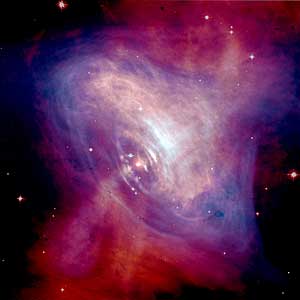May
22
Living on a Razor’s Edge (Part 1 of 2)
“One would have to conclude either that the features of the universe invoked in support of the Anthropic Principle are only coincidences or that the universe was indeed tailor-made for life. I will leave it to the theologians to ascertain the identity of the tailor!”
— Bernard Carr, cosmologist and professor of mathematics & astronomy
Tell me if this has ever happened to you.
 You’re twisting or sliding your radio dial — think old school, here — to find just the right song or program for the mood you’re in. Maybe you’re driving somewhere outside your usual area — I don’t know. You come across a familiar couple of notes, but, suddenly you’re past it. You back up and try again. You think you know where that “sweet spot” was on the dial. On one side is a bunch of static; on the other, another station with something really annoying keeps bleeding in. (Maybe old re-runs of Air America?) It takes awhile, but eventually you get the dial stabilized right on that “sweet spot”. But, if you bump it just a tad or hit a pot hole, you’ll lose it again.
You’re twisting or sliding your radio dial — think old school, here — to find just the right song or program for the mood you’re in. Maybe you’re driving somewhere outside your usual area — I don’t know. You come across a familiar couple of notes, but, suddenly you’re past it. You back up and try again. You think you know where that “sweet spot” was on the dial. On one side is a bunch of static; on the other, another station with something really annoying keeps bleeding in. (Maybe old re-runs of Air America?) It takes awhile, but eventually you get the dial stabilized right on that “sweet spot”. But, if you bump it just a tad or hit a pot hole, you’ll lose it again.
OK. That’s my clumsy metaphor for use in a fine-tuning argument.
Scientific discoveries over the past couple decades have been revealing just how amazingly, finely tuned the universe is; and, if things were just a minute bit different in any one of a multitude of conditions, we wouldn’t be here. Nor would any other living creature. The degree of precision needed for this balance is incredible! And this fine-tuning begins with the very fundamental forces and physical constants of the universe.
For instance, if either the strong nuclear force constant or the weak nuclear force constant was a tiny bit larger or smaller, there would either be too much (only?) hydrogen and not enough “heavy elements” (i.e., anything heavier than helium) produced by stars or too little (no?) hydrogen left and too much heavy element material. Stars are very sensitive to gravity, so if the gravitational force constant was a little different, they would either be too hot — and burn up too quickly & unevenly — or too cool for nuclear fusion to even begin — thus, no heavy elements produced.
Ratios are really important, too. For example, if the ratio of electron to proton mass was a tiny fraction larger or smaller, there would not be sufficient chemical bonding to produce the necessary elements. Even the ratio of the numbers of protons to electrons is crucial. A little bit either way (one part in 10^37), and electromagnetism would dominate gravity, which would mean that galaxies, stars, and planets could not form. Similarly, the expansion rate of the universe and the entropy level of the universe have to be dialed in just so, else galaxies and stars couldn’t form.
If the velocity of light was just a bit faster, stars would be too bright. A bit slower, and the stars wouldn’t be bright enough. If the age of the universe was a little older, no solar-type stars (i.e., like our Sun) would be left in a stable burning phase in the right region of the galaxy. A little younger, and no such stars would have had time to form or reach stability.
Now, here are a couple of biggies… In order for the universe to produce all of the stars & planets required to explain even the possibility (not necessity) of a life-sustaining Earth, the cosmic mass density value must be fine-tuned to better than one part in 10^60 and the space energy density value to better than one part in 10^120! That’s pretty dang precise!!
A few more parameters that must have values within narrow ranges for any sort of physical life to exist are:
— electromagnetic force constant
— ratio of electromagnetic force constant to gravitational force constant
— baryon or nucleon density of the universe
— initial uniformity of radiation
— fine structure constant (used to describe splitting of spectral lines)
— average distance between galaxies
— average distance between stars
— decay rate of proton
— mass excess of neutron over proton
— polarity of water molecule
— supernovae eruptions
— ratio of exotic to ordinary matter
— number of effective dimensions in early universe
— number of effective dimensions in present universe
— Big Bang ripples
— size of relativistic dilation factor
— uncertainty magnitude in the Heisenberg Uncertainty Principle
Beginning to get the picture?
Astronomer Hugh Ross at Reasons to Believe has been keeping a list as the fine-tunedness of various parameters become apparent. The current list is over 200! (Unfortunately, I wasn’t able to find an online copy to link to.) That’s a LOT of radio dials to get and keep in sync — like a humongous, incredibly sensitive soundboard. The odds against it are… astronomical!!
“[There] is for me powerful evidence that there is something going on behind it all…. It seems as though somebody has fine-tuned nature’s numbers to make the Universe…. The impression of design is overwhelming.”
— Paul Davies, world-renowned physicist & author
Next post, I’ll go over some of the evidences for fine-tuning in our galaxy/sun/earth/moon system for life support.
















